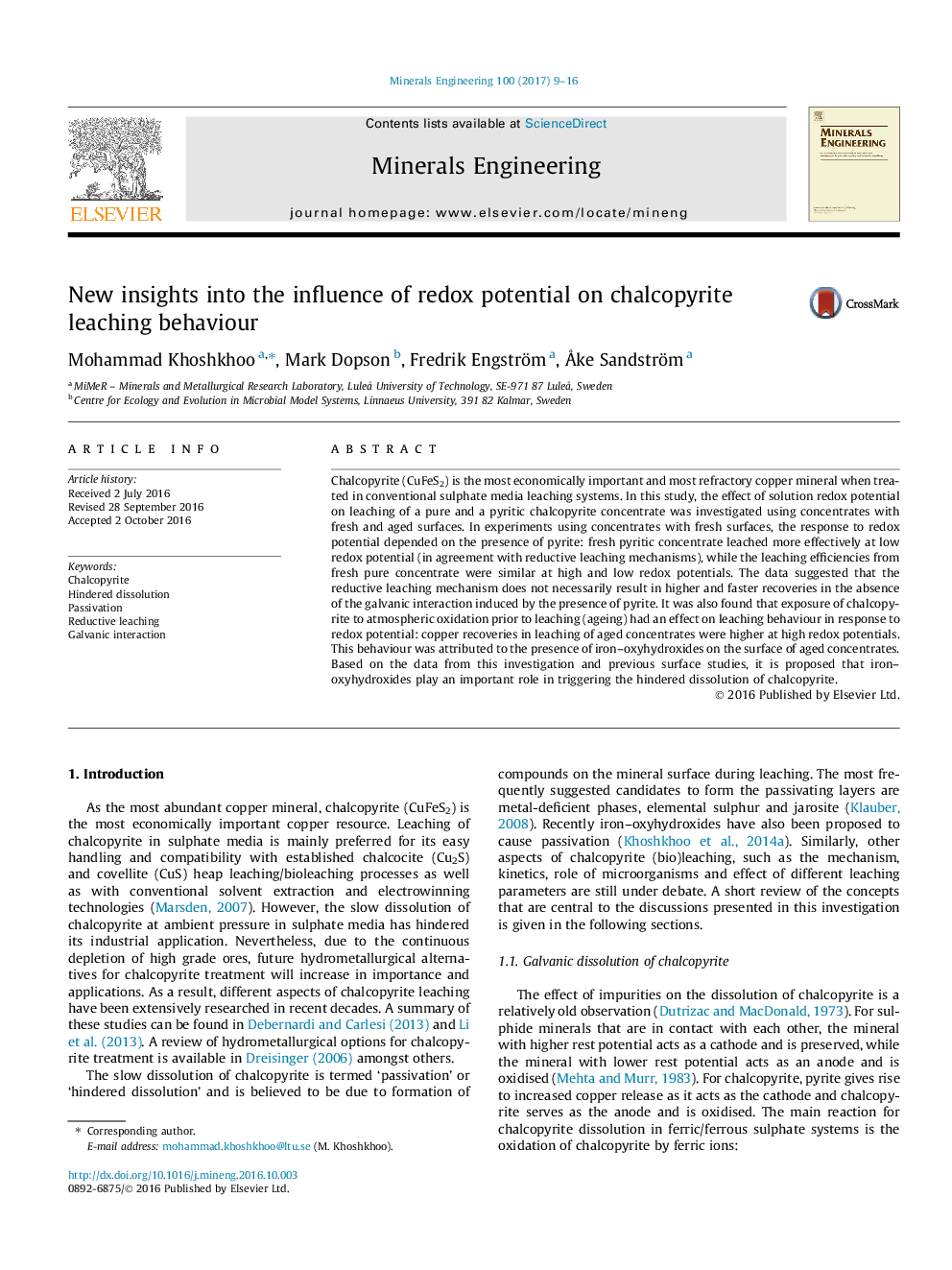| Article ID | Journal | Published Year | Pages | File Type |
|---|---|---|---|---|
| 4910278 | Minerals Engineering | 2017 | 8 Pages |
Abstract
Chalcopyrite (CuFeS2) is the most economically important and most refractory copper mineral when treated in conventional sulphate media leaching systems. In this study, the effect of solution redox potential on leaching of a pure and a pyritic chalcopyrite concentrate was investigated using concentrates with fresh and aged surfaces. In experiments using concentrates with fresh surfaces, the response to redox potential depended on the presence of pyrite: fresh pyritic concentrate leached more effectively at low redox potential (in agreement with reductive leaching mechanisms), while the leaching efficiencies from fresh pure concentrate were similar at high and low redox potentials. The data suggested that the reductive leaching mechanism does not necessarily result in higher and faster recoveries in the absence of the galvanic interaction induced by the presence of pyrite. It was also found that exposure of chalcopyrite to atmospheric oxidation prior to leaching (ageing) had an effect on leaching behaviour in response to redox potential: copper recoveries in leaching of aged concentrates were higher at high redox potentials. This behaviour was attributed to the presence of iron-oxyhydroxides on the surface of aged concentrates. Based on the data from this investigation and previous surface studies, it is proposed that iron-oxyhydroxides play an important role in triggering the hindered dissolution of chalcopyrite.
Related Topics
Physical Sciences and Engineering
Chemical Engineering
Chemical Engineering (General)
Authors
Mohammad Khoshkhoo, Mark Dopson, Fredrik Engström, Ã
ke Sandström,
